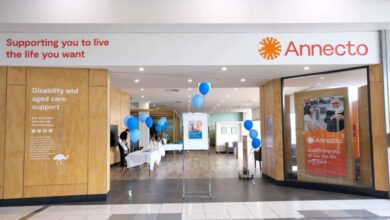COVID-19 situation report shows unprecedented crisis

Almost a quarter of aged care shifts are being unfilled as the sector records a surge in COVID-19 related deaths among people living in residential care, a new report has shown.
The Australian Aged Care Collaboration (AACC) published a situation report on Thursday which highlighted the pressures facing staff and residents amid the rampant spread of the Omicron variant.
It showed that more than 500 people have died in residential care since the beginning of January, with nearly 10,000 residents and more than 14,000 staff testing positive for the virus.
While the number of active cases appears to have peaked, a lack of transparent government data paints an unclear picture of the current situation, according to the AACC.
"Key information not being published, changes in definitions between reports, lack of consistent time series data and widespread inconsistencies make it very difficult to have a good understanding of what is happening in aged care," the report said.
"We believe that more needs to be done to understand the progression of Omicron and how long it takes to resolve in elderly groups, to inform management and testing strategies, and real time case data."
The report showed that critical worker shortages have continued to plague the sector, with around 140,000 shifts in residential care going vacant each week.
The Morrison government's attempt to retain the workforce, in the form of two $400 bonus payments, was labelled as "highly disappointing".
"Staff working in the Commonwealth Home Support Program (CHSP) will miss out altogether, as will Home Care and Residential Aged Care workers in maintenance, reception and lifestyle program roles," the report said.
"This makes it all the more difficult because in home care and residential care some staff will receive the payment while their colleagues will not – despite them all facing similar risks and work challenges.
"There also needs to be ongoing support for workforce incentives and preventative costs rather than one-off payments where the case needs to be re-prosecuted for every new wave."
The government's in-reach booster program has visited 2,350 homes as of this week, the report said, with vaccination levels of residents rising to 92 per cent.
There are concerns, however, that a lack of available booster data may not give an accurate idea of the number of residents yet to receive their third vaccination.
"The level of booster coverage is not yet known because it relies on reporting from providers still operating under severe workforce shortages," the report said.
The AACC is now calling on the government to implement a nationally consistent and transparent COVID-19 planning process to help protect the sector through the winter months.
"We cannot continue responding to future COVID-19 waves while the outbreak is occurring, we need
long-term, durable policy solutions that can provide certainty to both providers, workers and older
people," the report said.
Email: [email protected]





